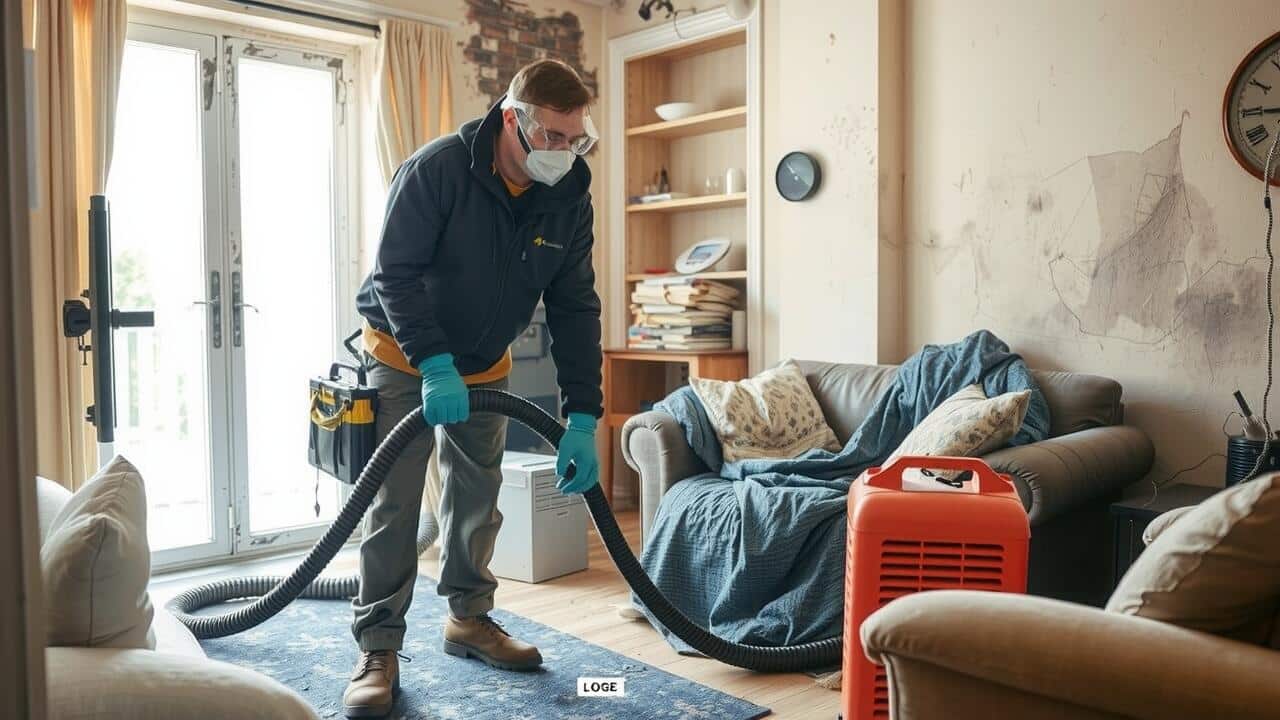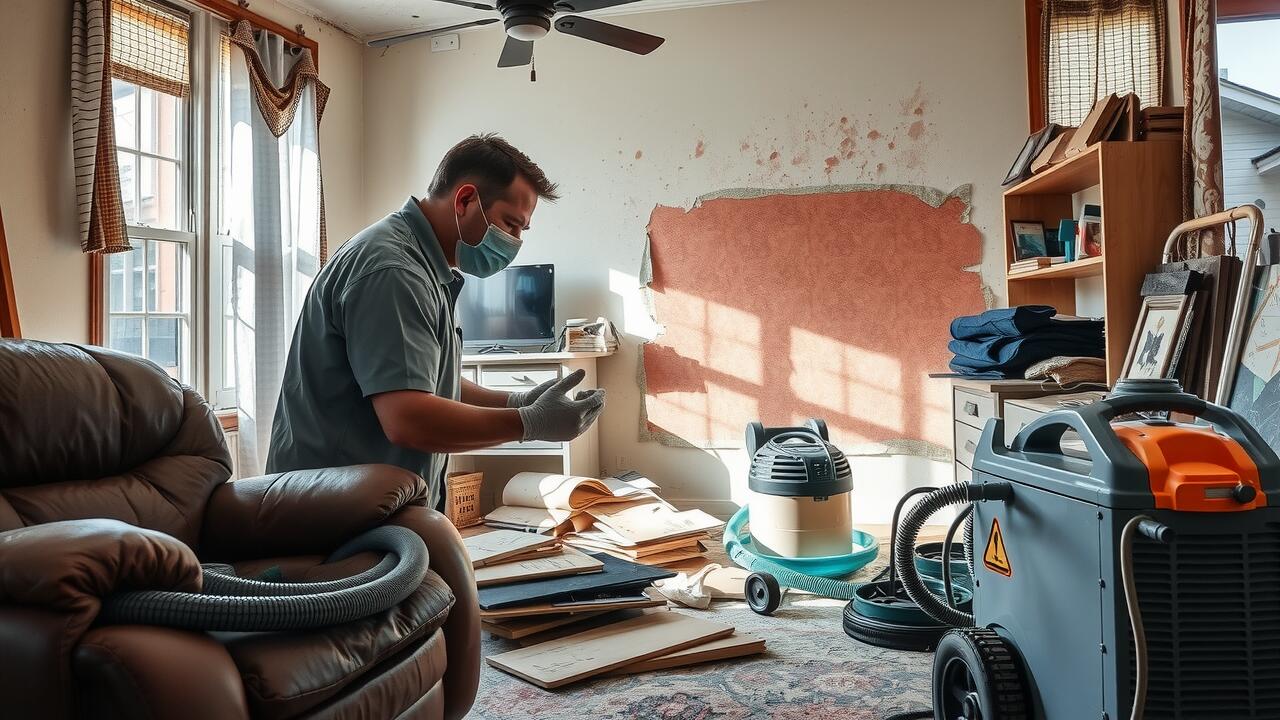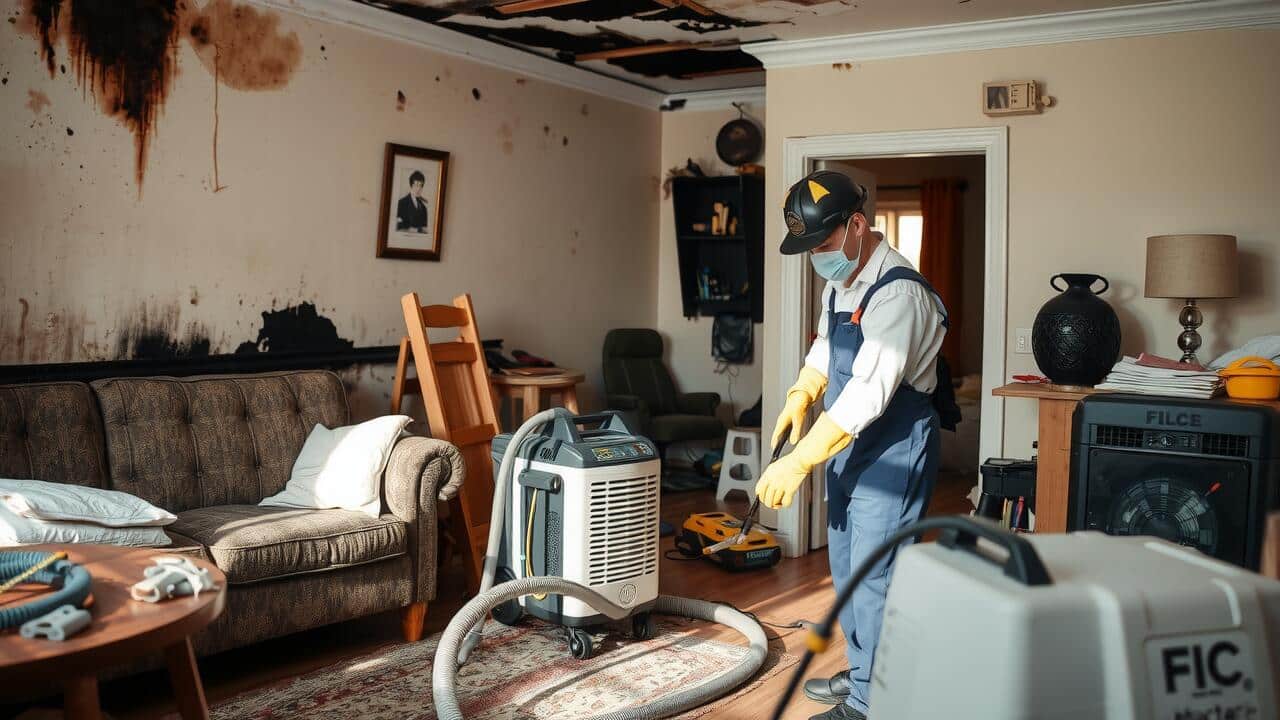
Table Of Contents
Content Cleaning and Restoration
Content cleaning and restoration is a critical aspect of the fire damage restoration process. After a fire, personal belongings such as furniture, clothing, and electronics may be severely affected by soot, smoke, and heat. Professionals utilize specialized techniques and equipment to assess the extent of damage. Immediate action is necessary to prevent further deterioration and to salvage as much as possible. A thorough inventory of items is conducted to determine what can be cleaned, repaired, or needs to be disposed of.
Fire damage restoration service often employs several methods tailored to the type of material being cleaned. Soft goods like textiles require different treatments compared to hard surfaces such as wood or metal. Restoration specialists might use steam cleaning, dry cleaning, or chemical treatments to effectively remove soot and odors. The goal is to restore items to a usable state while ensuring the safety of the occupants and preventing health hazards linked to smoke and soot exposure. Each item is carefully evaluated to maximize recovery outcomes.
Methods for Salvaging Personal Belongings
Personal belongings often sustain damage during a fire, making the methods used for salvage crucial. Fire damage restoration service professionals utilize various techniques to restore items, including clothing, electronics, and sentimental heirlooms. They assess the extent of the damage and prioritize items based on their significance and the potential for restoration. Cleaning and decontamination processes, such as dry cleaning and specialized equipment, may be employed to remove soot and debris effectively.
In addition to cleaning, fire damage restoration service teams also focus on preservation. Items that cannot be fully restored might still be saved through careful handling and appropriate storage techniques. Important documents can be freeze-dried to prevent further deterioration. Utilizing advanced technology, restoration experts can sometimes restore photographs and other irreplaceable items to their pre-damage condition. While not everything may be salvageable, a systematic approach significantly increases the chances of preserving valuable belongings.
Odor Removal Techniques
Smoke odors linger long after a fire has been extinguished. Specialized techniques are essential for effectively eliminating these stubborn scents. Fire damage restoration service professionals employ various approaches, including thermal fogging and ozone treatment. Thermal fogging involves using a heated fogging solution that penetrates materials to neutralize the odor at its source. Ozone treatment utilizes ozone generators to break down smoke molecules.
Additional methods may include air scrubbing and the use of specialized cleaning agents. Air scrubbers filter out airborne particles, effectively reducing lingering odors. Meanwhile, cleaning agents tailored for smoke damage can be applied to affected surfaces. These procedures require thorough assessment to ensure complete odor removal. Collaborating with a fire damage restoration service helps individuals regain a fresh and clean environment after the trauma of a fire.
Strategies for Eliminating Smoke Odor
Smoke odor can permeate various surfaces and materials in a home after a fire, creating a persistent and unpleasant environment. One effective strategy involves using specialized air scrubbers equipped with HEPA filters that capture airborne particles and smoke residues. Professional fire damage restoration service providers often utilize these machines to purify the air effectively, making the indoor space more livable. In addition to air scrubbers, ozone generators may be deployed to neutralize odors at a molecular level, ensuring that lingering smoke scents are significantly reduced or eliminated.
Another crucial approach focuses on deep cleaning and deodorizing affected surfaces. Cleaning professionals may utilize thermal fogging techniques, where a heated fog of deodorizing agent disperses throughout the space to reach hidden areas that traditional cleaning methods might miss. Fire damage restoration service teams also assess the materials impacted by smoke, whether it’s furniture, fabrics, or walls. They use appropriate cleaning solutions tailored to the specific surfaces to lift odors and restore freshness, improving overall air quality in the affected areas.
Dehumidification and Drying
Dehumidification and drying are essential components of fire damage restoration service. After a fire, moisture levels can rise dramatically due to water used to extinguish the flames. This excess moisture can lead to further damage, such as mold growth and deterioration of building materials. Effective drying techniques help to mitigate these risks by removing moisture from the air and surfaces within the affected area.
Restoration professionals employ specialized equipment, including industrial dehumidifiers and air movers, to speed up the drying process. These tools work together to create a controlled environment that facilitates rapid evaporation. Monitoring humidity levels throughout the drying phase ensures that the space returns to a safe and manageable condition. The thoroughness of this process is critical in preventing long-term damage to the structure and its contents.
Importance of Moisture Control
Moisture control plays a crucial role in fire damage restoration service. Excess moisture can lead to secondary damage, such as mold growth and structural decay. After a fire, surfaces may retain significant levels of humidity, creating an ideal environment for mold spores to flourish. Effective remediation requires the immediate removal of this moisture, which helps protect both the property and the health of its occupants.
Incorporating dehumidification strategies is essential during the restoration process. Fire damage can often leave behind water from firefighting efforts, exacerbating moisture issues. By utilizing specialized equipment, restoration professionals can efficiently lower humidity levels throughout the affected areas. This proactive approach reduces the risk of long-term damage and ensures a safe, healthy living environment.
FAQS
What is fire damage restoration?
Fire damage restoration is the process of cleaning and repairing a property that has been affected by fire, smoke, and soot. It involves a series of steps to restore the property to its pre-loss condition, including content cleaning, odor removal, and moisture control.
What does content cleaning and restoration involve?
Content cleaning and restoration involve assessing and salvaging personal belongings that may have been damaged by fire or smoke. This includes methods such as specialized cleaning techniques to remove soot, smoke residue, and odors from items like furniture, clothing, and electronics.
How are smoke odors eliminated during restoration?
Smoke odors can be eliminated using various techniques, such as ozone treatment, thermal fogging, and the application of odor-neutralizing agents. These methods work to break down the odor molecules and restore a fresh atmosphere in the affected areas.
Why is dehumidification important in fire damage restoration?
Dehumidification is crucial in fire damage restoration because it helps control moisture levels in the affected area. Excess moisture can lead to secondary damage, including mold growth, which can complicate the restoration process and pose health risks.
How long does the fire damage restoration process typically take?
The duration of the fire damage restoration process can vary depending on the extent of the damage, size of the property, and specific restoration techniques used. It can range from a few days to several weeks, so it’s important to consult with a restoration professional for a more accurate timeline.


